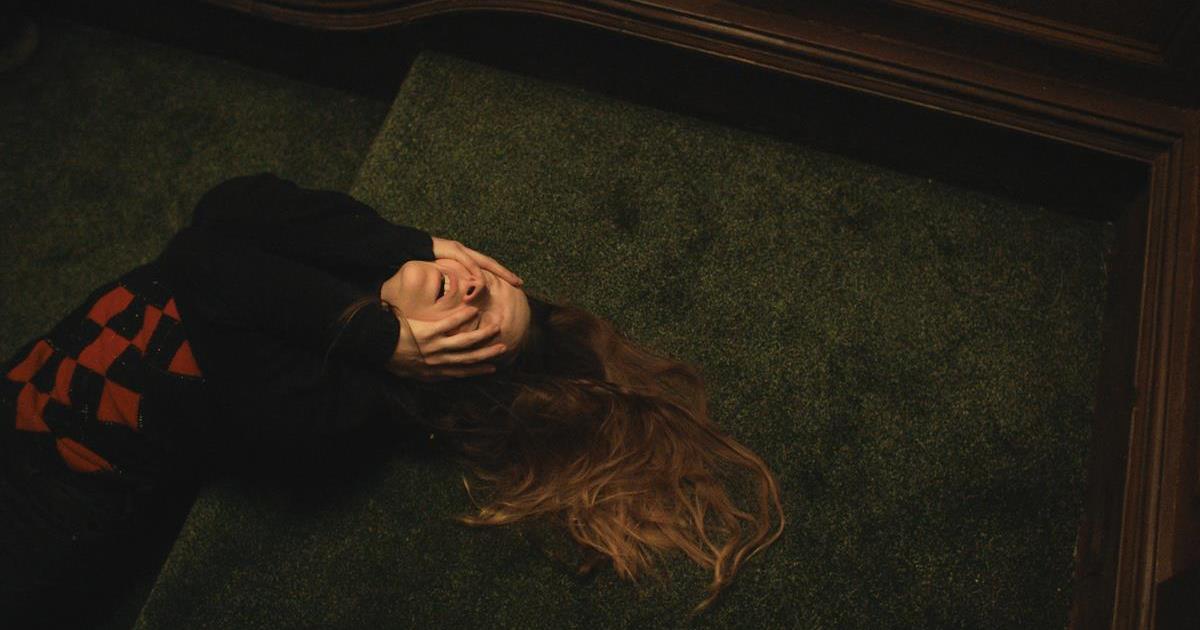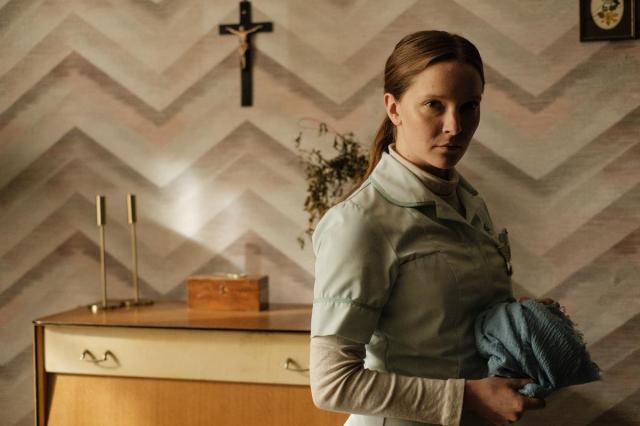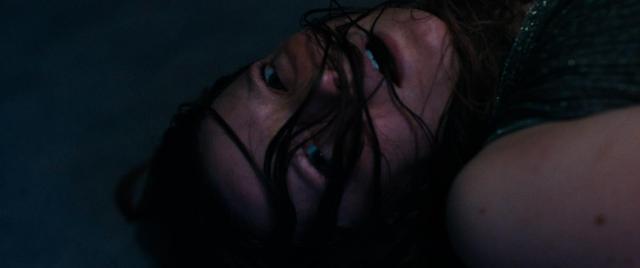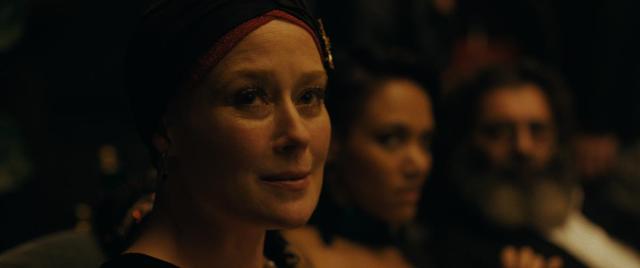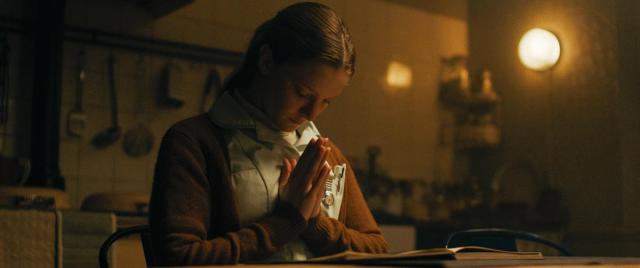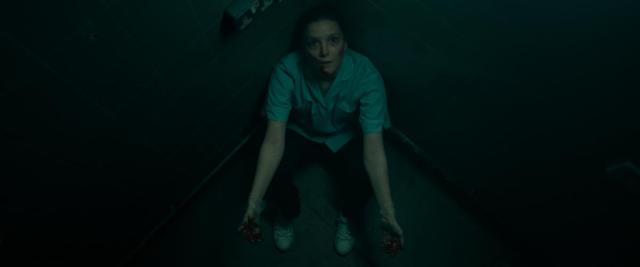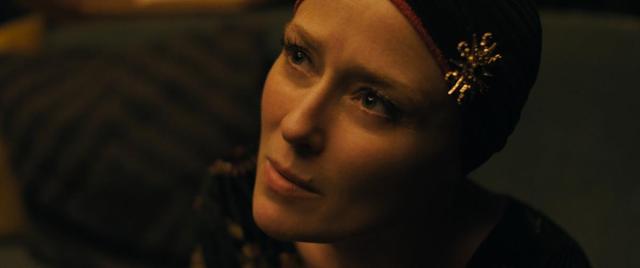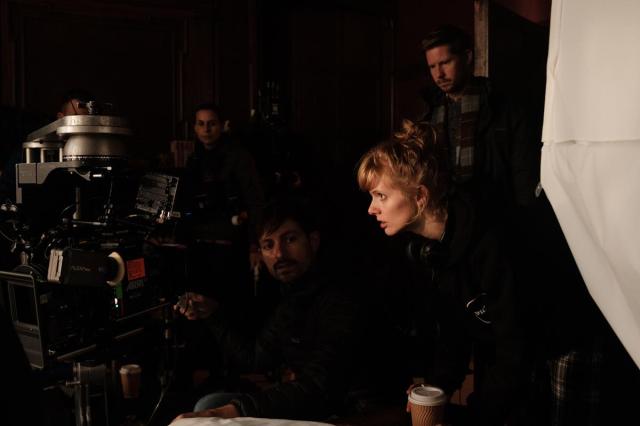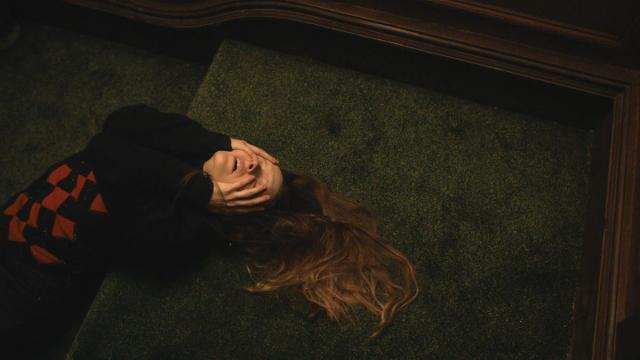Rose Glass’s feature directorial debut Saint Maud, available now on demand on Epix, has been eagerly awaited by horror fans since its TIFF premiere back in 2019. Delayed in the US by the Covid-19 pandemic, the film finally saw a limited theatrical release in the UK in October 2020, which only further whetted appetites. That heightened anticipation has been amply rewarded by the VOD release in early February of what Daily Beast entertainment editor Melissa Leon calls “the first great horror movie of 2021.”
Captured by director of photography Ben Fordesman, Saint Maud was awarded Best Cinematography at the British Independent Film Awards in January. In the film, live-in nurse Maud (Morfydd Clark) arrives at the home of Amanda (Jennifer Ehle), a famous dancer now trapped by illness in her grand, isolated house. At first Amanda is intrigued by this religious young woman, and Maud, in turn, is enamored by her new charge. But Maud, tormented by a violent secret from her past, is not all that she seems. She experiences religious ecstasies that lead her to believe she is receiving messages directly from God, and she becomes convinced she is on what becomes a deadly mission to save Amanda’s soul.
The film’s searing conclusion pulls it from the realm of standard religious tropes into true psychological horror. “For a moment, we see what Maud does: a final act of devotion rewarded with glory,” Leon writes:
“She glows like an angel, joyful tears rolling down her face. Those witnessing her ascension fall to their knees. She turns her gaze skyward — and for a stunning split second, the illusion breaks. We see her blackened, melting flesh and hear her voice scream in agony before an abrupt cut to black.”
From the start, Glass knew how her story would end, she tells Leon. “I wanted the whole story to be always told from her perspective, except for that one shot at the end,” she says. “But I still wanted people to be questioning it the whole way along.”
READ MORE: Inside the Terrifying ‘Saint Maud,’ the First Great Horror Movie of 2021 (Daily Beast)
David Fear, in his review for Rolling Stone, writes that Glass “displays a fully-formed-from-the-get-go sensibility” that “operates at a slow-burn,” comparing her to filmmakers like Jennifer Kent (The Babadook) and Julia Ducournau (Raw):
“Because Glass knows exactly how to employ these well-worn images, these true-blue supernatural-scare moments, like a seasoned pro, it’s easy to simply, pleasurably take in Saint Maud as a possession potboiler…. You can thrill to the sight of Clark being lifted off the floor, bent back in a perfect upside-U of a bridge, and the sound of some ancient dead language, being spoken in the most sepulchral of tones. There are Exorcist-ish moments in store — like we said, good things come to those that wait. You’ll be rewarded with a singularly beautiful late-act image likely to make you quietly utter ‘whoa,’ and a clever, climactic two-shot toggle from ecstasy to agony that could make you loudly shriek.”
READ MORE: ‘Saint Maud’: Faith, Madness, A Holy Terror of a Horror Movie (Rolling Stone)

To help create the atmosphere of Saint Maud, Glass looked to certain other films for inspiration, she told Meagan Navarro in an interview for Bloody Disgusting. “Not too many, to be honest,” Glass said. “For sure, in terms of visual language, tone, and style, things like Repulsion and Rosemary’s Baby. The Devils by Ken Russell. And also, things like Taxi Driver, but that’s not a horror film.”
READ MORE: Director Rose Glass On the Horror Influences of ‘Saint Maud’ and Her Cockroach Muse (Bloody Disgusting)
Glass held Repulsion, Roman Polanski’s classic 1965 psychological horror film, “in my head,” as she explains to Nick Chen in an interview for Dazed:
“To me, that film is an amazing example of how you can do so much with so little. The concept is pretty much one character in a flat the entire film. The storytelling finds a juxtaposition between seemingly mundane, intimate moments and the grandiose, mythical, apocalyptic version of it. Depending on the context and your state of mind, some small, innocuous gesture could mean the world or be devastating. Film and literature is uniquely placed to get that across.”
READ MORE: Saint Maud: a religious psychological horror capturing the nightmare of now (Dazed)
The idea of Martin Scorsese’s Taxi Driver arose early in the process of writing the script for Saint Maud, Glass recounts to Katie Rife in an interview for AV Club, describing a conversation with a development executive:
“He was struggling a little bit to picture the character in his head, what she was like and how she sees herself in the world. So as a shorthand, I was like, ‘Try imagining if Travis Bickle was a young Catholic woman living in an English seaside town.’ And then he was like, ‘Oh, okay. I get it.’
“It’s a bit of a stretch, but they’re both really neurotic antiheroes who have their own super important mission statement [to make] to society that they are preparing themselves for — and meanwhile the rest of the world doesn’t even know they exist. I like characters that have that contradiction of arrogance and self-loathing.
Maud’s character went through several different iterations before Glass landed on the final storyline, she tells Rife:
“The story changed a fair bit. Like, the mechanics of it. About halfway through the development process, I threw away a whole draft and then started again. It took a little while to work it out. I think it was more because it was the first feature film script I’d ever written. And I don’t think of myself as a writer. I don’t write for the sake of enjoying writing. It’s not the thing I was most confident with. I like it, and I’d written all of my short film scripts, but writing a feature turned out to be more daunting.”
READ MORE: Writer-director Rose Glass on the holy terror of Saint Maud (AV Club)
Glass discusses the cinematic influences for Saint Maud further in an interview with Jamie Graham for Games Radar, naming Ingmar Bergman’s Through A Glass Darkly, The Silence and Persona. “Those movies for the warped, claustrophobic, dreamlike atmosphere that he conjures up,” she says. “Taxi Driver, in terms of how the main character sees himself in comparison to how the rest of the world sees him. [Robert Bresson’s] Diary Of A Country Priest. And The Devils and Black Narcissus, which are visually epic and cinematic ways of telling very intimate stories.”
Delving into the visuals for the film, Graham writes that “Saint Maud’s formal risk-taking and tonal control are remarkable.” He also details how principal photography was achieved under a an indie feature budget:
“The action, often just two actors in a room, was shot in a house in London’s Highgate area, and a basement of a neighboring house standing in for Maud’s bedsit. Exteriors were filmed in Scarborough. It was a five-week shoot, with a week of pickups, and all the scenes featuring Ehle were shot first so she might return to New York and the production could limit its spend.”
“The contained, focused shoot makes for claustrophobic-but-far-from-dingy viewing, as Ben Fordesman’s crepuscular, claret-soaked lensing and Paulina Rzeszowska’s seamy production design unnerve viewers en route to an extraordinary climax.”
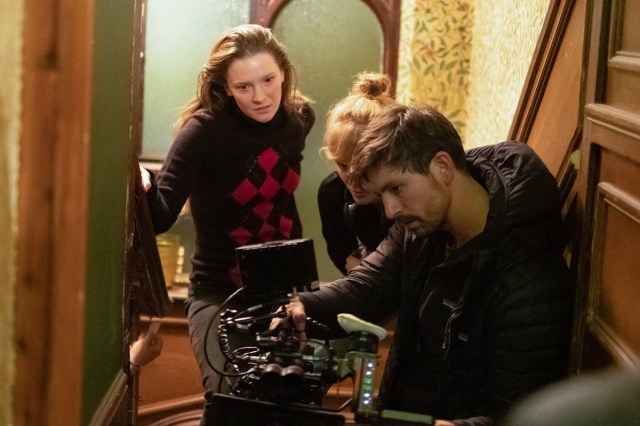
Visually and tonally, the world of Saint Maud “came first,” Glass tells Graham:
“I wanted it to start off controlled and gradually, hopefully almost imperceptibly, to unravel stylistically, into a more nightmarish world. The last thing I ever wanted to do was a small, bleak drama. I was telling people, ‘It will be fun, I promise!’ The sensual and visceral side of it was something I kept banging on about to anyone who would listen. We’re not just seeing things literally as they are, but are experiencing Maud’s sensory emotions.”
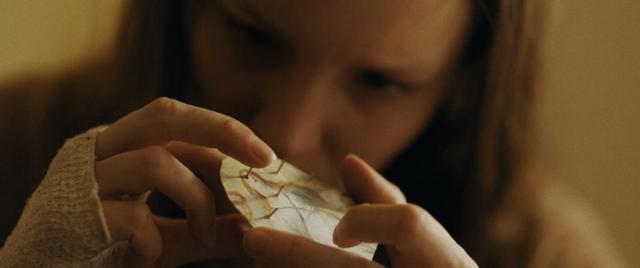
READ MORE: The making of Saint Maud, the shattering horror debut from Rose Glass (Games Radar)
Want more? In the video featurette below, watch Saint Maud director Rose Glass discuss how she came up with the idea for the film while studying at the National Film and Television School. The video also features interviews with producers Andrea Cornwell and Oliver Kassman, who cite Ingmar Bergman and Roman Polanski’s Rosemary’s Baby as key references, as well as costume designer Tina Kalivas, who talks about bringing the characters of Maud and Amanda to life through clothing:
Watch Saint Maud director Rose Glass, alongside stars Morfydd Clark and Jennifer Ehle, discuss the making of the film at the BFI London Film Festival in 2019:
Finally, in the video below, director Rose Glass talks to fellow horror queen Alice Lowe (Prevenge) about making her feature film debut:


